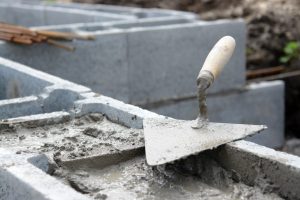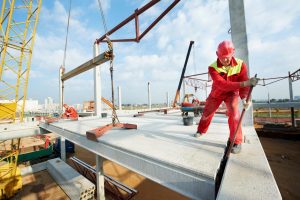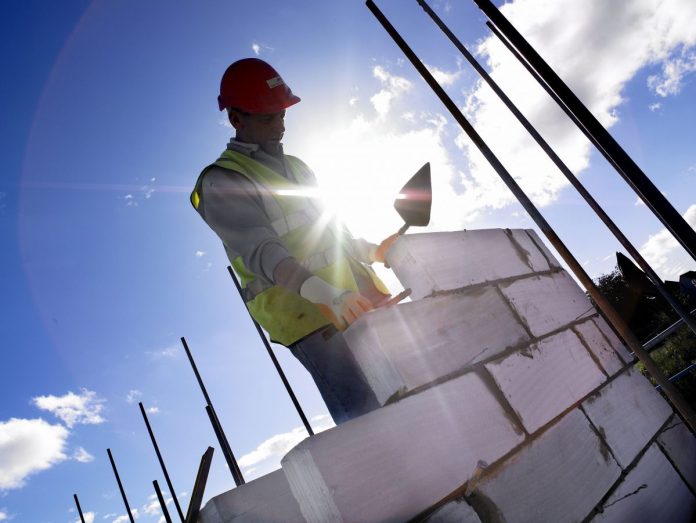Guy Thompson of the Concrete Centre looks at the need to build resilience into the urban landscape and key infrastructure using concrete and masonry
Since the July issue, which featured my article entitled Masonry solutions are key to building more homes, a response to the Housing White Paper, the future landscape for building control has come under some scrutiny following the Grenfell disaster.
And yet the fundamentals of our building regulations can still be seen to be based on sound principles that address most of the key issues for a safe future built environment. However, there are further questions, in particular their relevance to one of the key headings in the article; that of “resilience”.
Resilience can be described as the ability to withstand and recover from extreme events, and to endure in changing conditions. It can be considered from a wide range of perspectives, at a global or national level, for a city, society or business, right down to the personal resilience of an individual and, of course, their home.
It is going to take a multifaceted approach to ensure our housing, buildings and infrastructure are truly resilient to addressing predicted climate change, as well as all other challenges. Our solutions must address the current focus on carbon and energy reduction, as well as longer-term issues and impacts.
We need to fight a parallel war against the more immediate effects – especially, but not exclusively, flooding and overheating – as well as the predicted longer-term impacts, such as more frequent extreme weather events.
 Designers need to recognise the convergence and potential conflicts in the mitigation and adaptation strands in building and infrastructure design. For example, we may have to rebalance the emphasis on greater levels of insulation to save heating energy, with a greater drive on preventing overheating to reduce the likely energy demand for cooling.
Designers need to recognise the convergence and potential conflicts in the mitigation and adaptation strands in building and infrastructure design. For example, we may have to rebalance the emphasis on greater levels of insulation to save heating energy, with a greater drive on preventing overheating to reduce the likely energy demand for cooling.
The UK government remains formally committed to carbon reduction targets for 2050 and 2080, but has delayed planned further uplifts in energy standards via building regulations. While increasing the housing supply is now recognised as a key priority, failing to reduce emissions sufficiently early may cost us dearly later on. A genuinely efficient approach to materials would see us building more with less, as well as more for less. These are real challenges.
The importance of making buildings and infrastructure resilient to extreme weather events is now being recognised following a series of devastating weather events over recent years. The Department for Communities & Local Government has estimated that 87% of our current buildings will still exist in 2050, so we will need to carry out considerable adaptation work, as well as designing new buildings to be truly resilient to a range of impacts. These are likely to include flooding, drought, higher temperatures, high winds and storms and potential power outages, as well as heightened threats of combustion and to security within increasingly dense urban environments.
If cities continue to track the projected UK growth rate, we expect to see 5.2m extra city dwellers by 2037 and a further 4.1m by 2062 – almost 10m over the next 50 years. This is coupled with an ageing population, with the number of people over 85 set to double by 2030, which will create further demands of a different nature.
The National Infrastructure Plan 2010 highlighted climate change as a growing risk to system interdependencies between energy, transport, ICT, waste and water infrastructure. Climate change increases the risk of cascade failures. This is where a breakdown in one system has knock-on effects on others. For example, if the power network is taken out by flooding, how does this impact communications, security and the functioning of essential building systems?
 Designers will find many facets of resilience are covered extensively by voluntary schemes. We have yet to see true resilience embedded in building regulations but these schemes, such as BREEAM and the Homes Quality Mark (HQM), at least provide an excellent starting point for those who want to get ahead while building regulations catch up. Reasons for early adoption can be varied but may include: social and corporate responsibility; health and safety; asset protection; and reduced running costs, as well as market advantage and property protection. No one would question the primary need to protect building users, but the extension of building regulations to property protection would address key issues of resilience, material efficiency and carbon reduction.
Designers will find many facets of resilience are covered extensively by voluntary schemes. We have yet to see true resilience embedded in building regulations but these schemes, such as BREEAM and the Homes Quality Mark (HQM), at least provide an excellent starting point for those who want to get ahead while building regulations catch up. Reasons for early adoption can be varied but may include: social and corporate responsibility; health and safety; asset protection; and reduced running costs, as well as market advantage and property protection. No one would question the primary need to protect building users, but the extension of building regulations to property protection would address key issues of resilience, material efficiency and carbon reduction.
Some good news is that constructing homes using concrete and masonry provides many resilience benefits as a matter of course.
Resilience using concrete and masonry
Around 85% of all new homes in the UK can be categorised as concrete construction; the majority of which are in the form of concrete block walls, often as the inner structural leaf of a brick-and-block cavity wall. This form of construction is not always obvious in a completed property, hidden behind a plastered or plasterboard lining. For multi-storey residential developments, the construction solution will change and the most common is a concrete frame, concrete floors and concrete foundations.
Key benefits include:
Flood resilience – Concrete retains its structural integrity, resulting in minimal waste of materials following a flood.
Thermal mass – Concrete’s thermal mass can reduce or avoid the need for mechanical cooling. This inherent property of concrete can save hundreds of kilograms of CO2 over a building’s life.
Fire – Concrete is non-combustible, helping to ensure its longevity and avoiding the need for additional fireproofing materials.
Acoustic isolation performance – Concrete offers good inherent acoustic performance, requiring very little in the way of additional finishes and materials, which often have a short lifespan. As a result, less material is used and potential waste is avoided over the life of the building.
Durability – The durability of concrete structures helps them to achieve a long life and maximise their performance, keeping their whole-life environmental impact to a minimum.
Robustness and security – Concrete can provide a robust finished surface, avoiding the need for additional materials, which would require maintenance and periodic replacement over a building’s lifecycle.
Concrete and masonry remain the safe and resilient core to a sustainable and resilient built environment for the long term and were the assumed form of construction when the building regulations were first developed. This perhaps explains their pre-eminent use for housing.
Guy Thompson
Head of Architecture, Housing and Sustainability
The Concrete Centre
Tel: +44 (0)207 963 8000
Twitter: @concretecentre



![[Video] Fireco: 80 new fire doors required for residential flats in London](https://www.pbctoday.co.uk/news/wp-content/uploads/2025/04/2024-06-01-Lords-view-one_1200x750_004-218x150.webp)










